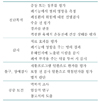Abstract
Early diagnosis and smoking cessation are the only effective ways to stop or delay the progression of chronic obstructive pulmonary disease (COPD). It is true that primary-care physicians rarely use spirometry to establish the diagnosis of COPD in smokers or to detect COPD or asthma in patients with respiratory symptoms or signs. Recently, however, with the advances in the development of electrical devices, a new category of spirometry, "office spirometry", has been introduced. Office spirometry is a simple, safe, and noninvasive test. In addition, it takes only a few minutes for the patient and technician to perform office spirometry, which includes a few breathing maneuvers of a 6-second duration. Primary-care physicians are strongly encouraged to perform an office spirometry test in patients with respiratory symptoms such as chronic cough, sputum, wheezing, dyspnea or in patients over 45 years of age who report smoking cigarettes in order to detect COPD.
Figures and Tables
References
1. Enright PL, Hyatt RE. Office Spirometry A Practical Guide to the Selection and Use of Spirometers. 1896. Philadelphia: Lea & Febiger.
2. Ferguson GT, Enright PL, Buist AS, Higgins MW. Office Spirometry for Lung Health Assessment in Adults: A Consensus Statement From the National Lung Health Education Program. Chest. 2000. 117:1146–1161.

3. Miller MR, Hankinson J, Brusasco V, Burgos F, Casaburi R, Wanger J, et al. Standardisation of spirometry. Eur Respir J. 2005. 26:319–338.

5. Weinberger SE, Drazen JM. Kasper DL, Braunwald E, Fauci AS, Hauser S, Longo D, Jameson JL, editors. Disturances of Respiratory Function. Harrison's Principles of Internal Medicine. 2005. 16th ed. New York: McGraw-Hill;1498–1501.
6. Buffels J, Degryse J, Heyrman MDJ, Decramer M. Office Spirometry Significantly Improves Early Detection of COPD in General Practice. Chest. 2004. 125:1394–1399.





 PDF
PDF ePub
ePub Citation
Citation Print
Print










 XML Download
XML Download